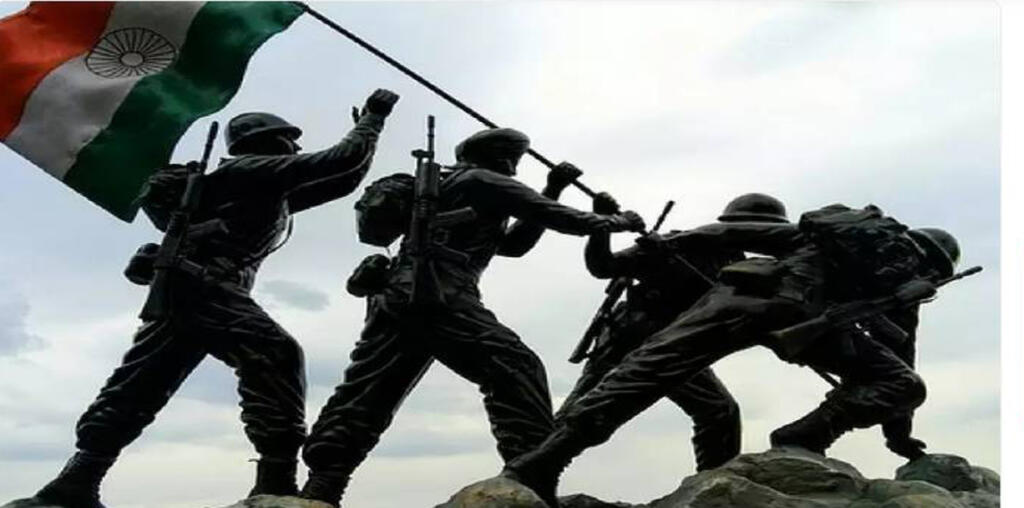The Kargil War of 1999 stands as a watershed moment in India’s military annals. This conflict, etched in the nation’s collective memory, is often symbolized by the iconic image of Indian soldiers hoisting the tricolor atop Tiger Hill. This landmark victory, achieved on July 4, 1999, marked a crucial juncture in Operation Vijay, demonstrating the Indian Army’s valor and strategic prowess.
The Significance of Tiger Hill in the Kargil War
Tiger Hill, a towering peak at 5,307 meters, dominated the Drass sector. Its strategic location made it a key objective in the Kargil War. Controlling this mountain meant having a tactical advantage over the entire region. As the conflict unfolded, Tiger Hill became more than just a geographical feature; it transformed into a symbol of national pride and military determination.
The Kargil War: Origins and Initial Stages
The Kargil War began in May 1999 when Pakistani forces infiltrated Indian territory along the Line of Control (LoC). This intrusion, orchestrated by high-ranking Pakistani military officials, posed a significant threat to India’s sovereignty. The Indian Army soon realized that recapturing Tiger Hill was crucial to securing the vital National Highway 1A and turning the tide of the Kargil War.
The Battle for Tiger Hill: A Testament to Indian Valor
The 18 Grenadiers regiment was tasked with the challenging mission of reclaiming Tiger Hill. Supported by the 8 Sikh regiment, they launched a multi-pronged assault on July 3, 1999. The operation began with intense artillery fire, followed by a daring climb by Indian soldiers.
Lt Balwan Singh’s Ghatak Platoon approached from the treacherous northeastern face, catching the enemy off guard. After fierce hand-to-hand combat, the Indian forces emerged victorious. By 8 am on July 4, the Indian flag was proudly unfurled atop Tiger Hill, signaling a major turning point in the Kargil War.
Nationwide Reactions to the Kargil War Victory
The recapture of Tiger Hill during the Kargil War sparked jubilation across India. President K R Narayanan praised the soldiers’ bravery and perseverance. Defense Minister George Fernandes and Army Chief General VP Malik congratulated the armed forces for this remarkable achievement. General Shankar Roy Chowdhury hailed it as the Indian Army’s greatest feat since the 1971 Bangladesh War.
Heroes of the Kargil War: Honoring Bravery
The Kargil War produced many heroes, with soldiers receiving numerous gallantry awards. Subedar Major Yogendra Singh Yadav, then a Grenadier, became the youngest recipient of the Param Vir Chakra for his exceptional courage. Despite sustaining multiple injuries, he played a pivotal role in the success of the mission. Havildar Madan Lal was posthumously awarded the Vir Chakra for his valiant efforts during the Kargil War.
The Legacy of the Kargil War
The victory in the Kargil War, particularly the recapture of Tiger Hill, remains a source of immense pride for India. It demonstrated the Indian Army’s resilience, strategic acumen, and unwavering commitment to protecting the nation’s borders. The Kargil War serves as a powerful reminder of the sacrifices made by Indian soldiers and continues to inspire future generations of military personnel.
In conclusion, the Kargil War stands as a testament to the bravery and determination of the Indian Armed Forces. The recapture of Tiger Hill was a pivotal moment in this conflict, showcasing the strategic importance of geographical features in warfare. As we reflect on the Kargil War, we honor the courage of those who fought to protect India’s sovereignty and remember the lessons learned from this significant chapter in our nation’s history.
ALSO READ: “Arey mahila ho, kuch jaanti nahi ho?”, questioned Nitish Kumar
